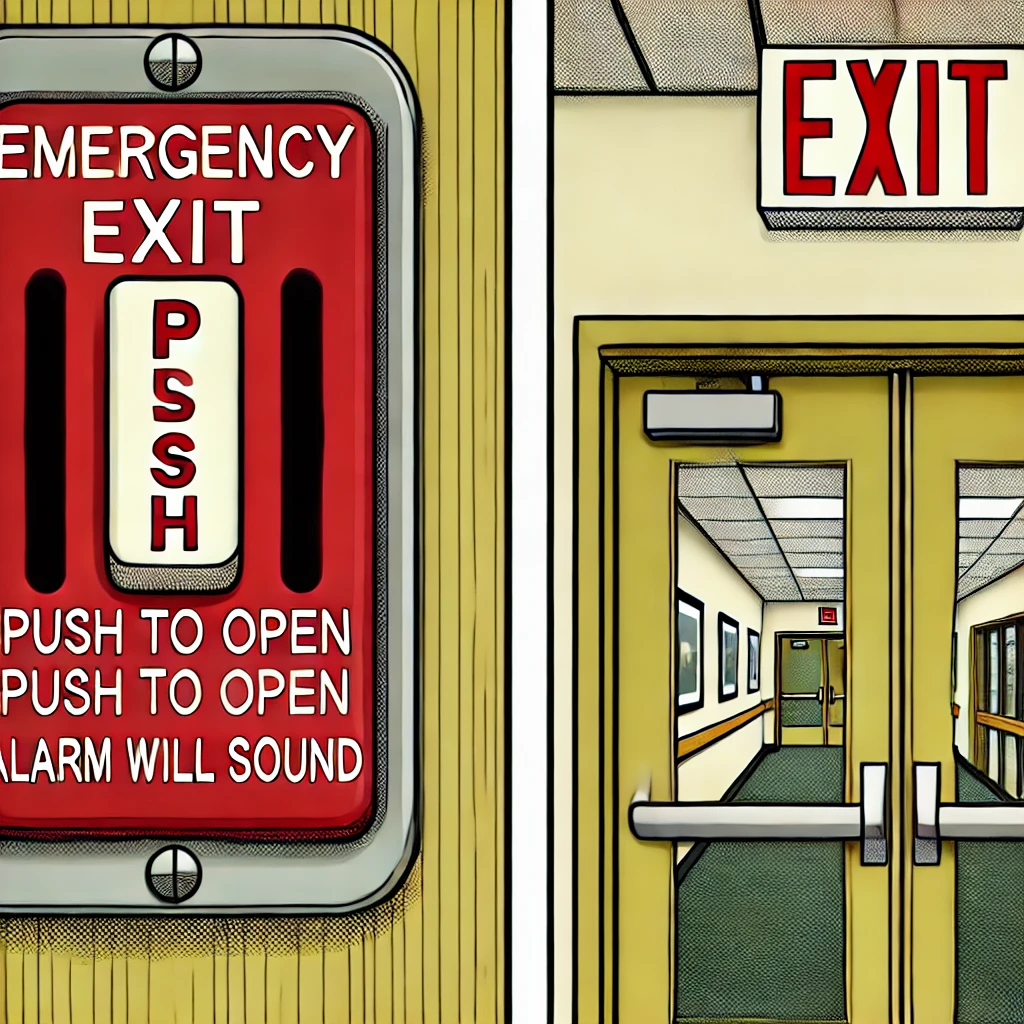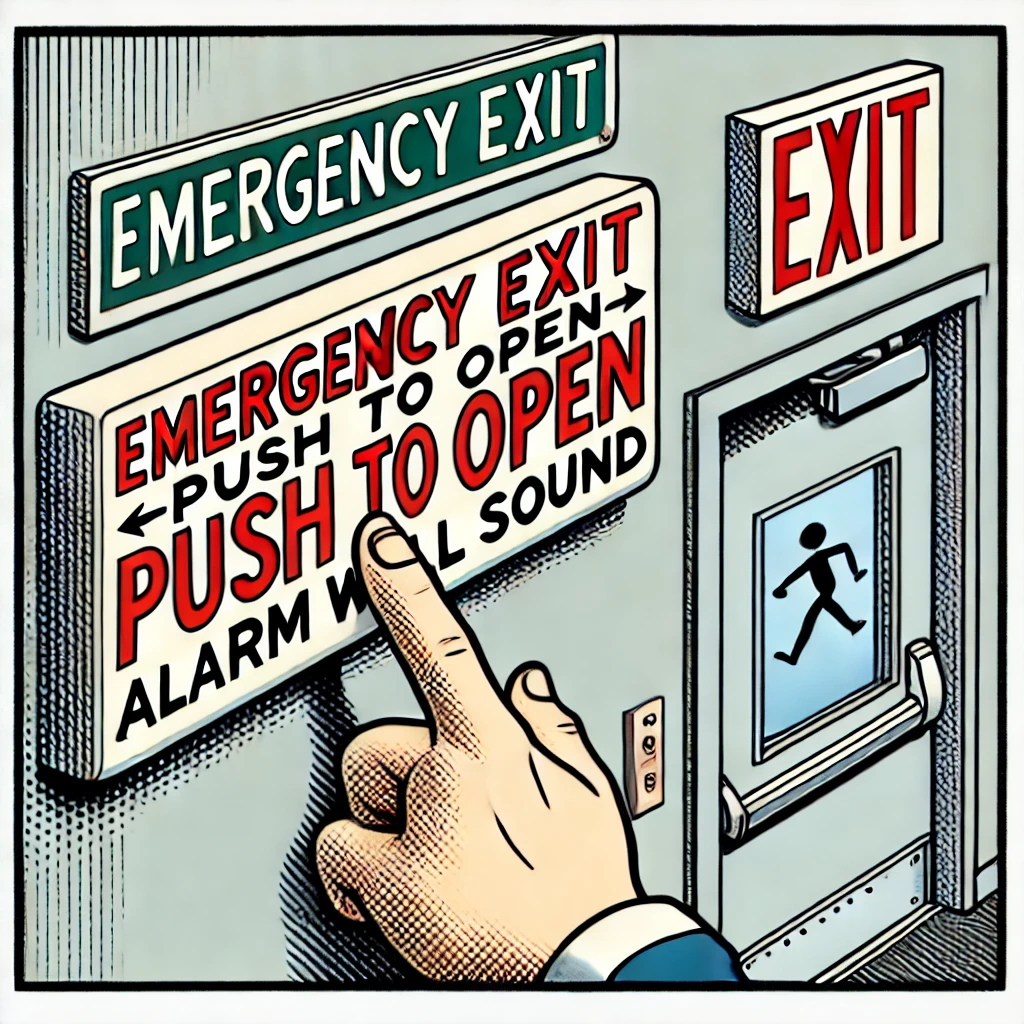Repairing a panic bar door lock is a task that requires precision and a bit of patience, but it’s something you can handle with the right guidance. Panic bars are crucial for ensuring safe and quick exits in emergencies, so keeping them in top shape is essential. Here’s a step-by-step guide to help you fix a malfunctioning panic bar door lock.
Quick Answer: How to Repair a Panic Bar Door Lock
- Identify the Problem: Before diving into the repair, figure out what’s wrong. Is the bar sticking? Does the lock fail to engage or disengage? Identifying the issue is half the battle.
- Gather Tools: You’ll need a screwdriver, lubricant, and possibly replacement parts, depending on the issue.
- Remove the Panic Bar: Unscrew the panic bar from the door, carefully keeping track of all screws and components.
- Inspect and Clean: Look for any obvious signs of wear or damage. Clean out any dirt or debris that might be causing the issue. Lubricate the moving parts.
- Replace Damaged Parts: If any components are broken or excessively worn, replace them. This could include springs, latches, or the bar itself.
- Reassemble and Test: Put everything back together and test the bar to ensure it’s functioning smoothly.
Detailed Guide to Panic Bar Door Lock Repair
Now that you have the basics, let’s dive deeper into each step.
Identifying the Problem
Before you start, take a moment to observe how the panic bar is functioning. If the bar sticks when pressed, the problem might be a lack of lubrication or dirt buildup. If the lock doesn’t engage, the issue could be with the internal mechanism.
Q: How can I tell if a part needs to be replaced?
A: If you notice cracks, severe wear, or the part doesn’t move as it should after cleaning and lubrication, it’s best to replace it. This ensures the long-term reliability of the panic bar.
Tools and Parts
Having the right tools makes the job much easier. Here’s what you’ll need:
- Screwdriver: To remove and reattach the panic bar.
- Lubricant: Helps with stuck parts and smooth operation.
- Replacement parts: If any parts are damaged, you’ll need the exact match to replace them.
Removing the Panic Bar
Unscrew the panic bar from the door, taking care to remember how everything fits together. It’s a good idea to take photos as you go, so you know exactly how to reassemble it later.
Q: Do I need to remove the door to fix the panic bar?
A: No, the door can stay in place. You only need to remove the panic bar itself.
Inspecting and Cleaning
Once the panic bar is off, inspect it closely. Look for dirt, dust, or any debris that could be causing the problem. Clean all the components thoroughly and apply lubricant to any moving parts. This simple maintenance can often solve minor issues.
Tip: Regular panic bars maintenance can prevent many common problems and extend the life of your equipment.
Replacing Damaged Parts
If you find a part that’s damaged beyond repair, replace it. When purchasing replacement parts, make sure they’re compatible with your specific panic bar model.
Q: How can I ensure I get the right replacement parts?
A: Check the model number of your panic bar and consult the manufacturer’s guide or a professional.
Reassembling and Testing
After everything is cleaned, lubricated, and any damaged parts are replaced, reassemble the panic bar. Once it’s back on the door, test it several times to ensure it works smoothly. The bar should press easily and the lock should engage and disengage without any issues.

FAQ: Common Panic Bar Issues
Q: What if the panic bar is still sticking after cleaning?
A: If the bar sticks after cleaning, it might be an issue with the internal springs. Replacing the springs should solve the problem.
Q: How often should panic bars be maintained?
A: Panic bars should be checked and maintained at least once a year. Regular panic bar repair can help avoid unexpected failures.
Q: Is it worth repairing a panic bar myself, or should I call a professional?
A: If the repair is simple, like cleaning or replacing a spring, it’s worth doing yourself. For more complex issues or if you’re unsure, it’s best to contact an exit devices installation service.
When to Call a Professional
While many panic bar issues can be resolved with basic tools and a bit of patience, there are times when professional help is needed. If your panic bar has a more complicated mechanism or you’re dealing with a commercial door push bar repair in a high-traffic area, getting expert assistance is advisable.
For those in Memphis, TN, looking for door hardware Memphis, TN solutions, or needing more comprehensive help like panic bar installation cost assessments or full panic bar installation, consulting a professional ensures that your door hardware is up to code and functioning as required.


